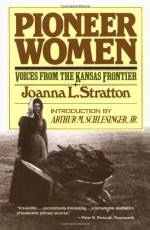
|
| Name: _________________________ | Period: ___________________ |
This test consists of 15 multiple choice questions and 5 short answer questions.
Multiple Choice Questions
1. Which of the following towns sprang up around the cattle drive business?
(a) Abilene.
(b) San Diego.
(c) Columbus.
(d) Phoenix.
2. What was the minimum acreage of dedicated township to establish a town?
(a) 50 acres.
(b) 1000 acres.
(c) 320 acres.
(d) 500 acres.
3. Who founded the immigrant community of Victoria?
(a) Sir Paul McCracken.
(b) Sir George Grant.
(c) Sir Walter Raleigh.
(d) Sir James Carlton.
4. How many English people were attracted to settle in Victoria?
(a) 500.
(b) 100.
(c) 50.
(d) 200.
5. How did the frontier circuit preacher supplement his meager income?
(a) Shoed horses.
(b) Did carpentry work.
(c) Tutored students.
(d) Relied on housing and food from his congregation.
6. Towns on the frontier had a(n) ______________ quality.
(a) Boom or bust.
(b) Innovative.
(c) Aggressive.
(d) Robust.
7. In what city did William C. Quantrill base his operations?
(a) Abilene.
(b) Fort Scott.
(c) Harlan.
(d) Lawrence.
8. What was an issue of constant tension in Kansas from its very beginning?
(a) Slavery.
(b) Religion.
(c) Prohibition.
(d) Education.
9. What weapon was Carry Nation notorious for using?
(a) Rifle.
(b) Fireplace poker.
(c) Shovel.
(d) Ax.
10. Kansas was the ___________ state in the union to grant women the right to vote in federal elections.
(a) 4th.
(b) 8th.
(c) 13th.
(d) 1st.
11. What was the first issue to unite many women in Kansas?
(a) Education.
(b) Healthcare.
(c) Voting rights.
(d) Temperance.
12. From which of the following did teachers teach in frontier schools?
(a) University books.
(b) Magazines.
(c) The Bible.
(d) Their own lessons.
13. The majority of prairie teachers were _________________.
(a) Women from bigger cities.
(b) Missionaries.
(c) Frontier mothers.
(d) Young girls.
14. Why were inns hard to maintain on the frontier?
(a) Native Americans in the area.
(b) No advertising.
(c) Lack of food.
(d) High food prices.
15. How many Kansas men joined the Union army when the Civil War came?
(a) 33,000.
(b) 20,000.
(c) 7,000.
(d) 13,000.
Short Answer Questions
1. What organization initiated real change in the temperance movement in Kansas?
2. Why were meat supplies low in the East?
3. In what year did Kansas officially become a state?
4. William C. Quantrill's most famous exploit against a Federal prison left 200 buildings in ruins and killed _______ people.
5. In what year was the statewide Equal Suffrage Association created?
|
This section contains 353 words (approx. 2 pages at 300 words per page) |

|




